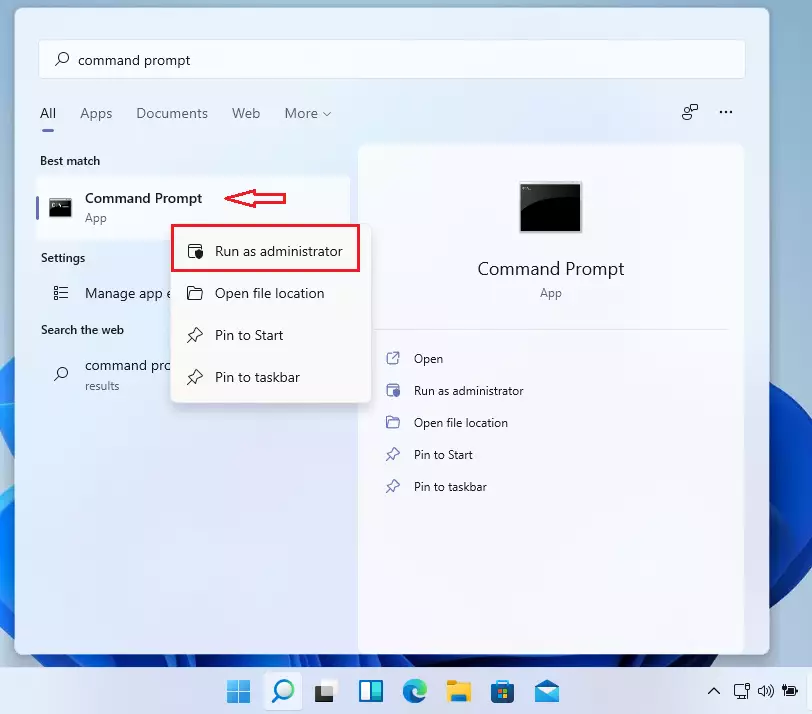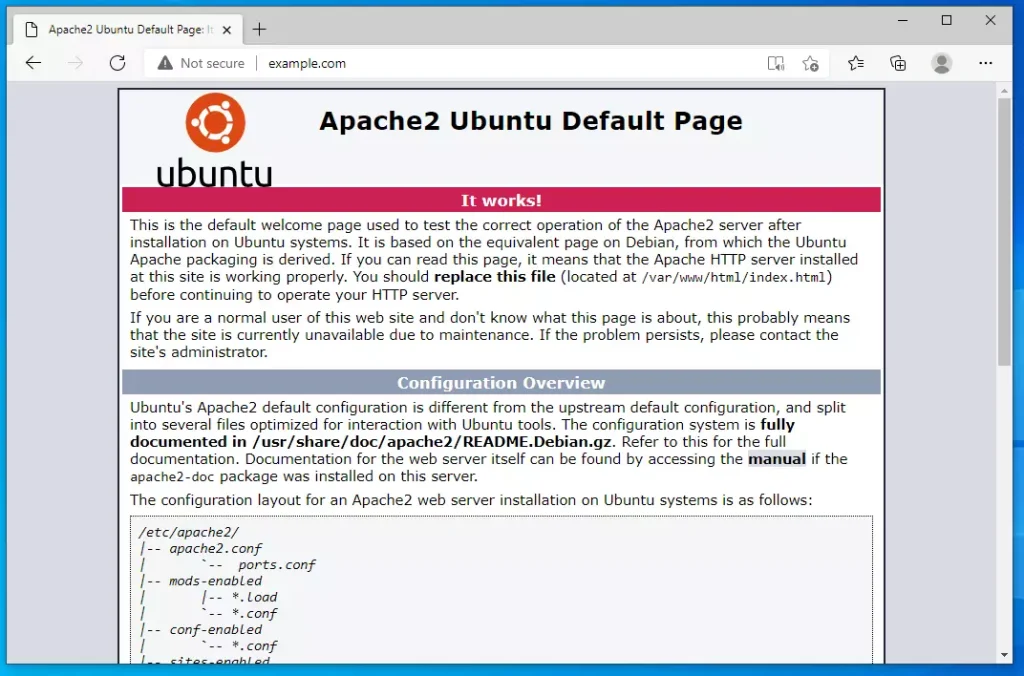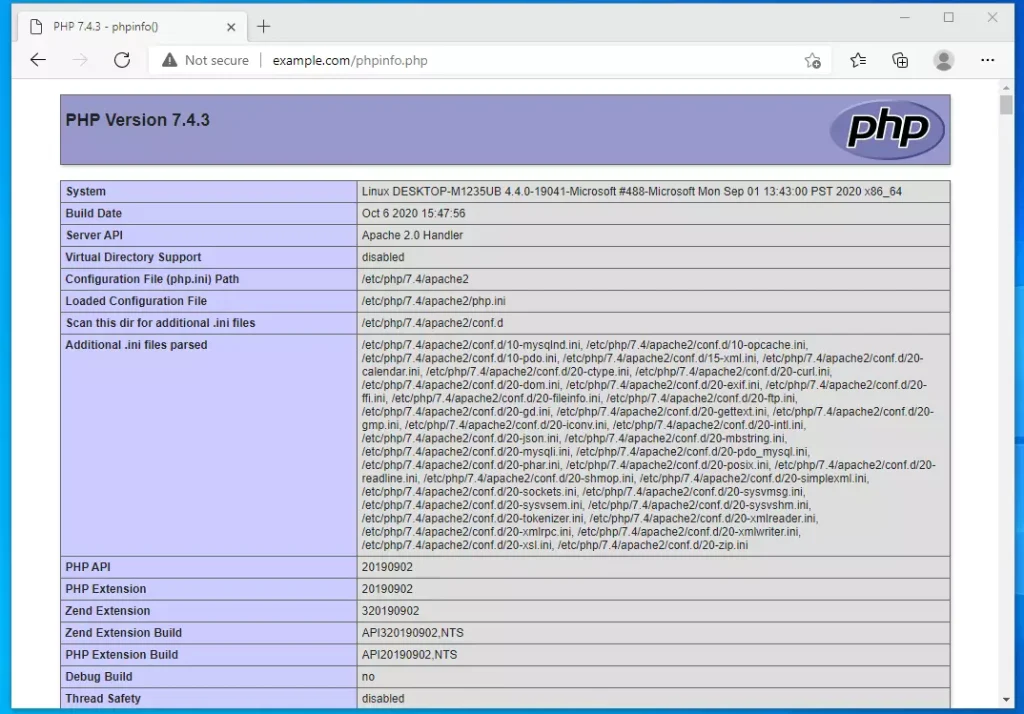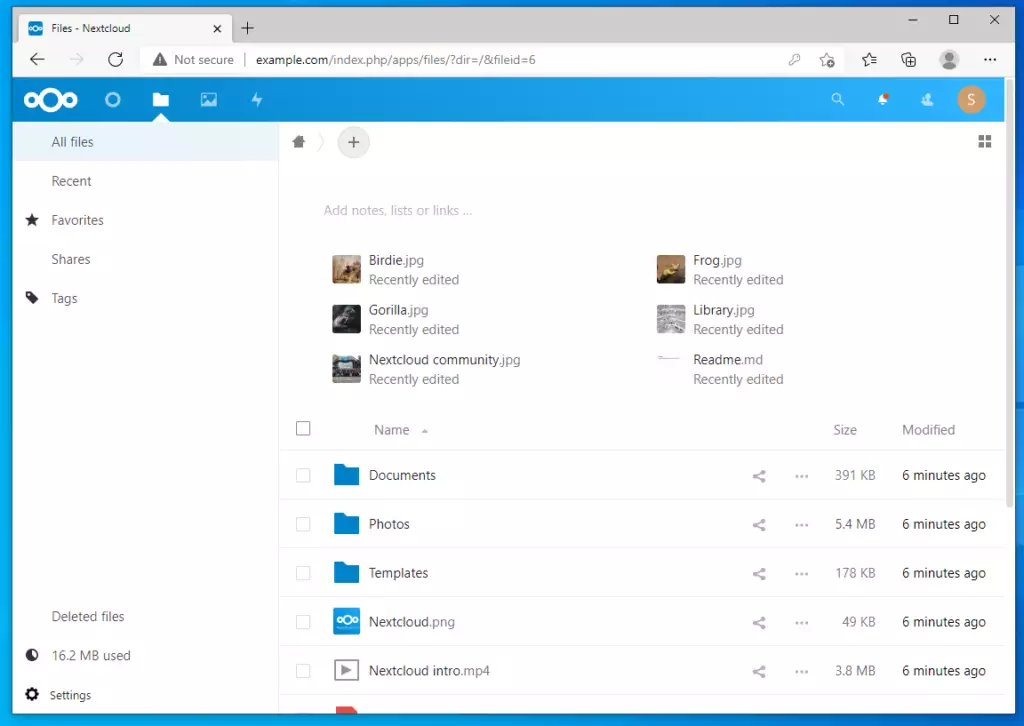This brief tutorial shows students and new users how to install Nextcloud Cloud and sync storage software on Windows 11 using Windows Subsystem for Linux (WSL or WSL2).
With Windows Subsystem for Linux, you no longer need to install additional software or run a virtual machine in Windows 11 to install Nextcloud. You can now install and run Nextcloud directly from Windows 11 via WSL. In 2017, Microsoft released WSL and WSL2, which lets developers run a GNU/Linux environment, including most command-line tools, utilities, and applications directly in Windows without setting up a virtual machine or dual-boot.
WSL2 is the new and improved version that comes with a performance boost and complete system call compatibility, and it is built with a new architecture that delivers features that make WSL a fantastic way to run a Linux environment in Windows.
With Windows 11, installing WSL is slightly different than in Windows 10. However, the steps below will show you how to do that.
To install and run Nextcloud on Windows 11, you must first install and enable WSL.
Install Windows Subsystem for Linux in Windows 11
To enable WSL in Windows, you must open the Command Prompt as administrator. Click on Start, then begin typing Command Prompt.
Next, right-click the Command Prompt app and choose to Run as administrator.

When the console opens, run the commands below to install Windows Subsystem for Linux (WSL):
wsl --install
Wait for WSL to be installed.
After installing, you should get a success message similar to the lines below:
Installing: Virtual Machine Platform Virtual Machine Platform has been installed. Installing: Windows Subsystem for Linux Windows Subsystem for Linux has been installed. Downloading: WSL Kernel Installing: WSL Kernel WSL Kernel has been installed. Downloading: GUI App Support Installing: GUI App Support GUI App Support has been installed. Downloading: Ubuntu The requested operation is successful. Changes will not be effective until the system is rebooted.
Restart your computer.
WSL should be installed and ready to use. When you want to update, run the commands below:
wsl --update
Install Specific Linux distro on Windows 11
Now that WSL is installed, you can install your own Linux distro. To list the available distributions to install, simply run the commands below:
wsl --list --online
You should then see all available distributions that can be installed on WSL.
NAME FRIENDLY NAME
Ubuntu Ubuntu
Debian Debian GNU/Linux
kali-linux Kali Linux Rolling
openSUSE-42 openSUSE Leap 42
SLES-12 SUSE Linux Enterprise Server v12
Ubuntu-16.04 Ubuntu 16.04 LTS
Ubuntu-18.04 Ubuntu 18.04 LTS
Ubuntu-20.04 Ubuntu 20.04 LTS
To install a Linux distribution from the list above, simply run the commands below using the distribution name. For example, to install Ubuntu 20.04, run the commands below:
wsl --install -d ubuntu-20.04
You should then get a message that the distribution is installed.
Downloading: Ubuntu 20.04 LTS Installing: Ubuntu 20.04 LTS Ubuntu 20.04 LTS has been installed. Launching Ubuntu 20.04 LTS.
After installing, you should get a Ubuntu command console with setup details.
Installing, this may take a few minutes.
Please create a default UNIX user account. The username does not need to match your Windows username.
For more information visit: https://aka.ms/wslusers
Enter new UNIX username: Richard
New password:
Retype new password:
passwd: password updated successfully
Installation successful!
To run a command as administrator (user "root"), use "sudo <command>".
See "man sudo_root" for details.
Welcome to Ubuntu 20.04 LTS (GNU/Linux 4.4.0-22000-Microsoft x86_64)
Some troubleshooting commands to run when you run into issues.
wsl --set-default-version 1 bcdedit /set hypervisorlaunchtype auto start
Install Apache HTTP Server
Apache is the most popular open-source web server powering most websites online. Since Nextcloud needs it, use the commands below to install it on Ubuntu.
To install Apache on Ubuntu, run the commands below:
sudo apt update sudo apt install apache2
After installing Apache2, the commands below can be used to stop, start and restart Apache2 services.
sudo service apache2 stop sudo service apache2 start sudo service apache2 restart
To validate that Apache is installed and functioning, open your web browser and browse to the server’s hostname or IP address.
You should get a test page if everything works.
http://localhost

Install MariaDB Database Server
For this tutorial, we’re going to be installing MariaDB. Nextcloud needs a database server to store its content.
MariaDB is a truly open-source database server you can run with your projects. It is fast, secure, and the default server for almost all Linux.
To install MariaDB, run the commands below:
sudo apt-get install mariadb-server mariadb-client
After installing MariaDB, the commands below can be used to stop, start, and restart MariaDB services.
sudo service mysql stop sudo service mysql start sudo service mysql restart
Next, run the commands below to secure the database server with a root password if you were not prompted to do so during the installation.
sudo mysql_secure_installation
When prompted, answer the questions below by following the guide.
- Enter current password for root (enter for none): Just press the Enter
- Set root password? [Y/n]: Y
- New password: Enter password
- Re-enter new password: Repeat password
- Remove anonymous users? [Y/n]: Y
- Disallow root login remotely? [Y/n]: Y
- Remove test database and access to it? [Y/n]: Y
- Reload privilege tables now? [Y/n]: Y
To verify and validate that MariaDB is installed and working, log in to the database console using the commands below:
sudo mysql -u root -p
Type the root password when prompted.
Welcome to the MariaDB monitor. Commands end with ; or \g.
Your MariaDB connection id is 46
Server version: 10.3.29-MariaDB-0ubuntu0.20.04.1 Ubuntu 20.04
Copyright (c) 2000, 2018, Oracle, MariaDB Corporation Ab and others.
Type 'help;' or '\h' for help. Type '\c' to clear the current input statement.
MariaDB [(none)]>
The server was successfully installed if you see a similar screen.
Install PHP and Related Modules
PHP is a general-purpose scripting language that glues all the above components together. Nextcloud is a PHP application and requires PHP and related modules to function.
To install PHP and recommended modules, run the commands below.
sudo apt install php libapache2-mod-php php-imagick php-imap php-json php-ldap php-common php-pgsql php-ssh2 php-sqlite3 php-xml php-mysql php-gmp php-curl php-intl php7.4-mbstring php-xmlrpc php-gd php-xml php-cli php-zip
That should get PHP installed with recommended PHP modules that you can run with many PHP-based applications.
To validate that PHP is installed, run the commands below:
php -v
You should see an output like the one below:
PHP 7.4.3 (cli) (built: Oct 6 2020 15:47:56) ( NTS ) Copyright (c) The PHP Group Zend Engine v3.4.0, Copyright (c) Zend Technologies with Zend OPcache v7.4.3, Copyright (c), by Zend Technologies
You can also test with a test PHP script and display the installed version and related modules that are enabled or disabled.
To do that, run the commands below to create a PHP test file called phpinfo.php
sudo nano /var/www/html/phpinfo.php
Then, type the content below and save the file.
<?php phpinfo( ); ?>
Save the file.
Open your browser and browse to your server hostname followed by phpinfo.php
Restart Apache, then type the address and browse the file.
http://example.com/phpinfo.php
You should see the PHP default test page.

At this stage, all required components that Nextcloud needs are installed above. Continue below to download and configure Nextcloud settings.
Create Nextcloud Database
Now that you’ve installed all the packages required for Nextcloud to function, continue below to start configuring the servers. First, run the commands below to create a blank Nextcloud database.
To log on to the MariaDB database server, run the commands below.
sudo mysql -u root -p
Then, create a database called nextcloud
CREATE DATABASE nextcloud;
Create a database user called nextclouduser with a new password
CREATE USER 'nextclouduser'@'localhost' IDENTIFIED BY 'new_password_here';
Then, grant the user full access to the database.
GRANT ALL ON nextcloud.* TO 'nextclouduser'@'localhost' WITH GRANT OPTION;
Finally, save your changes and exit.
FLUSH PRIVILEGES; EXIT;
Download Nextcloud
Next, download the latest version of Nextcloud.
When writing this article, the latest stable version of Nextcloud is version 21.0.2. Make sure to visit the Nextcloud download page and check if a new version of Nextcloud is available.
wget https://download.nextcloud.com/server/releases/nextcloud-21.0.2.zip -P /tmp sudo unzip /tmp/nextcloud-21.0.2.zip -d /var/www
Then, run the commands below to set the correct permissions for Nextcloud to function.
sudo chown -R www-data:www-data /var/www/nextcloud/ sudo chmod -R 755 /var/www/nextcloud/
Configure Nextcloud Site
Finally, configure the Apahce2 site configuration file for Nextcloud. This file will control how users access Nextcloudcontent. Run the commands below to create a new configuration file called nextcloud. conf
sudo nano /etc/apache2/sites-available/nextcloud.conf
Then copy and paste the content below into the file and save it. Replace the highlighted line with your domain name and directory root location.
<VirtualHost *:80>
ServerAdmin [email protected]
DocumentRoot /var/www/nextcloud/
ServerName example.com
ServerAlias www.example.com
Alias /nextcloud "/var/www/nextcloud/"
<Directory /var/www/nextcloud/>
Options +FollowSymlinks
AllowOverride All
Require all granted
<IfModule mod_dav.c>
Dav off
</IfModule>
SetEnv HOME /var/www/nextcloud
SetEnv HTTP_HOME /var/www/nextcloud
</Directory>
ErrorLog ${APACHE_LOG_DIR}/error.log
CustomLog ${APACHE_LOG_DIR}/access.log combined
</VirtualHost>
Save the file and exit.
After configuring the VirtualHost above, please enable it by running the commands below, including other modules.
sudo a2ensite nextcloud.conf sudo a2enmod rewrite sudo a2enmod headers sudo a2enmod env sudo a2enmod dir sudo a2enmod mime
When you’re done, restart Apache.
sudo service apache2 restart
Now browse the server hostname or IP address and set up the Nextcloud platform.
http://example.com
Create an admin account, enter the database details, and finish the installation.

Log in with the account you create above and start building your environment.

Conclusion:
This post showed you how to install Nextcloud in Windows WSL. If you find any error above, please use the comment form below to report.

Leave a Reply